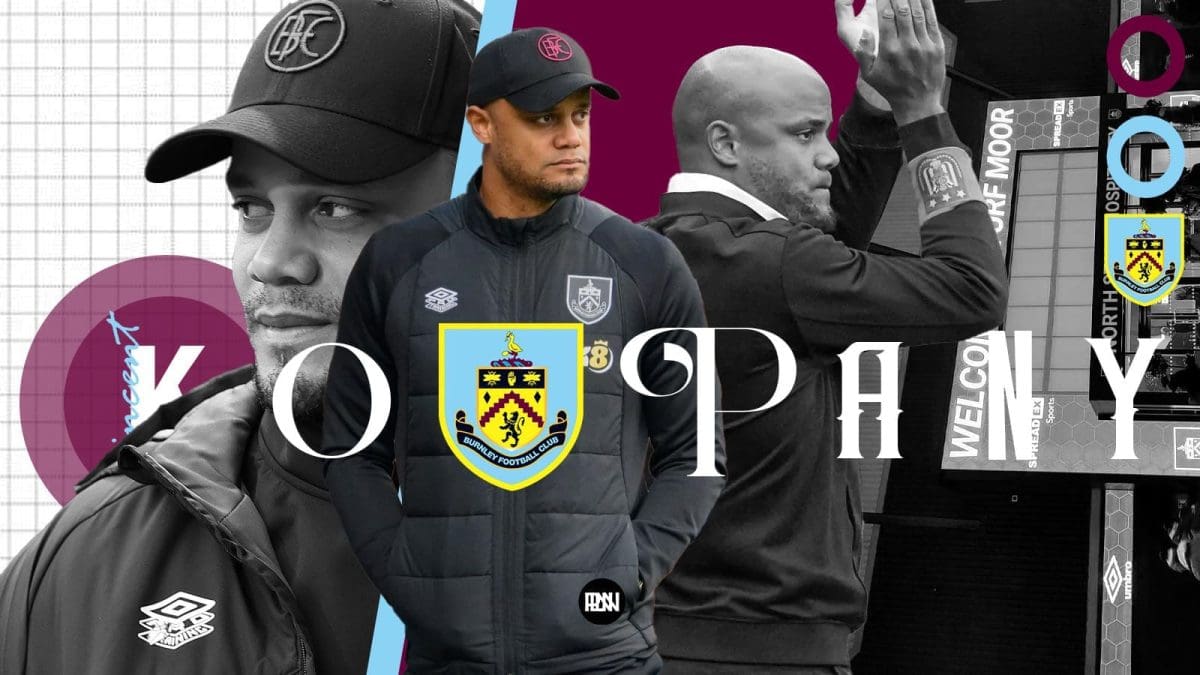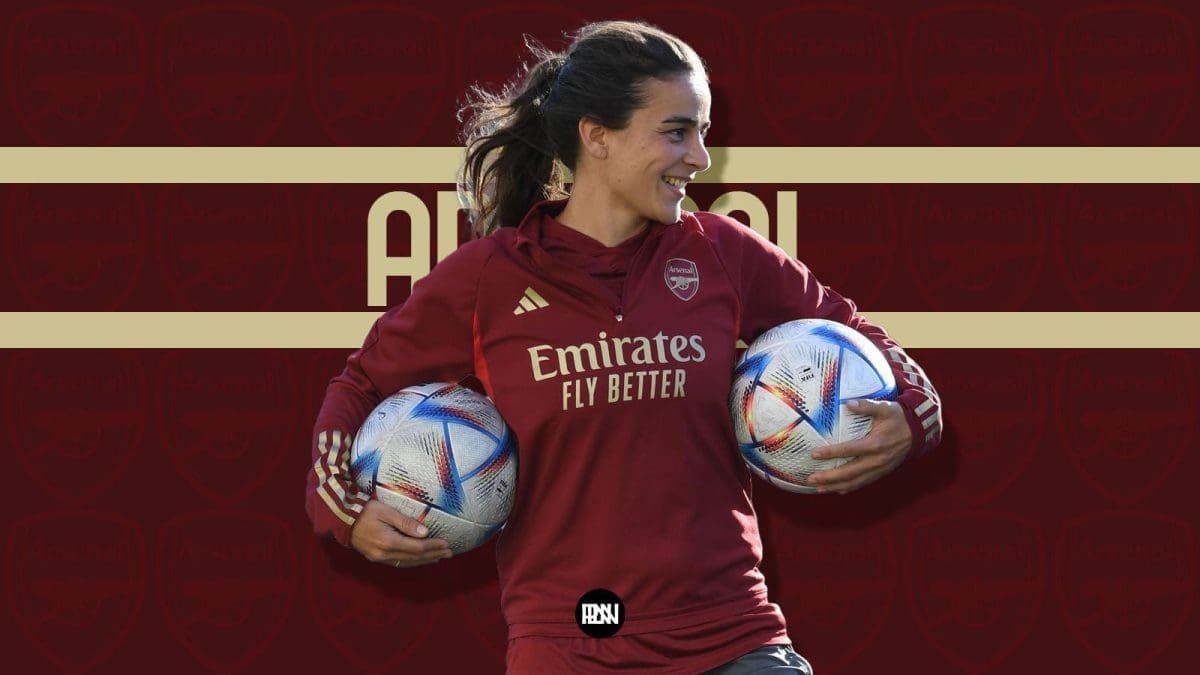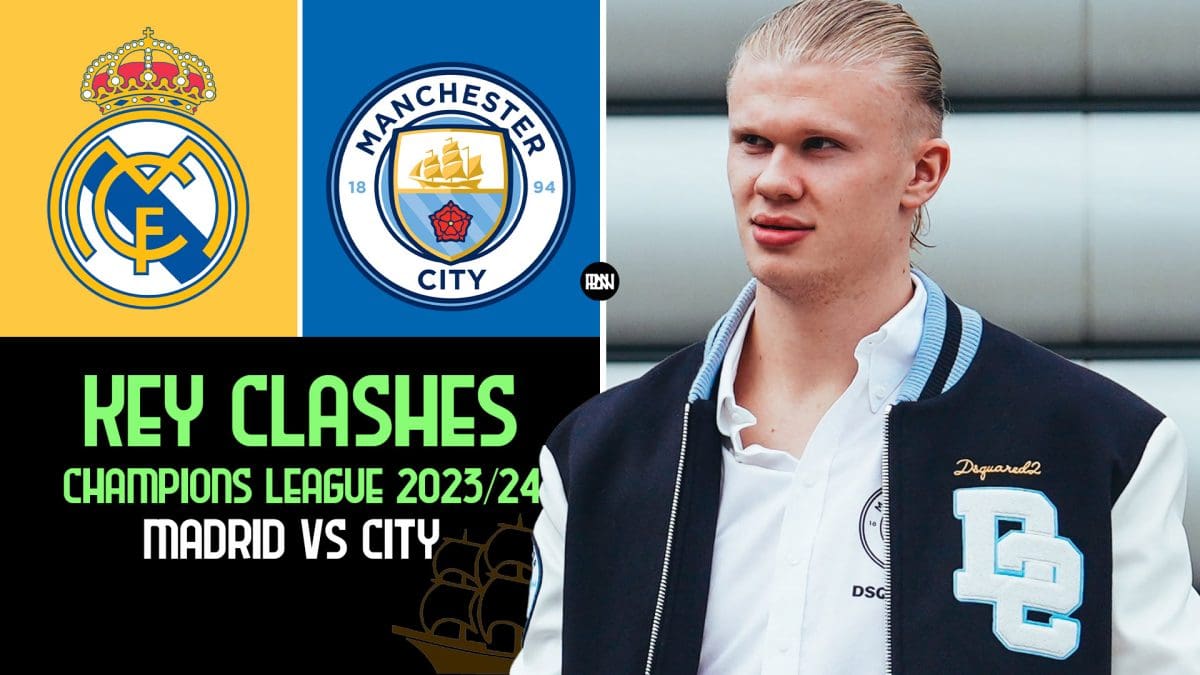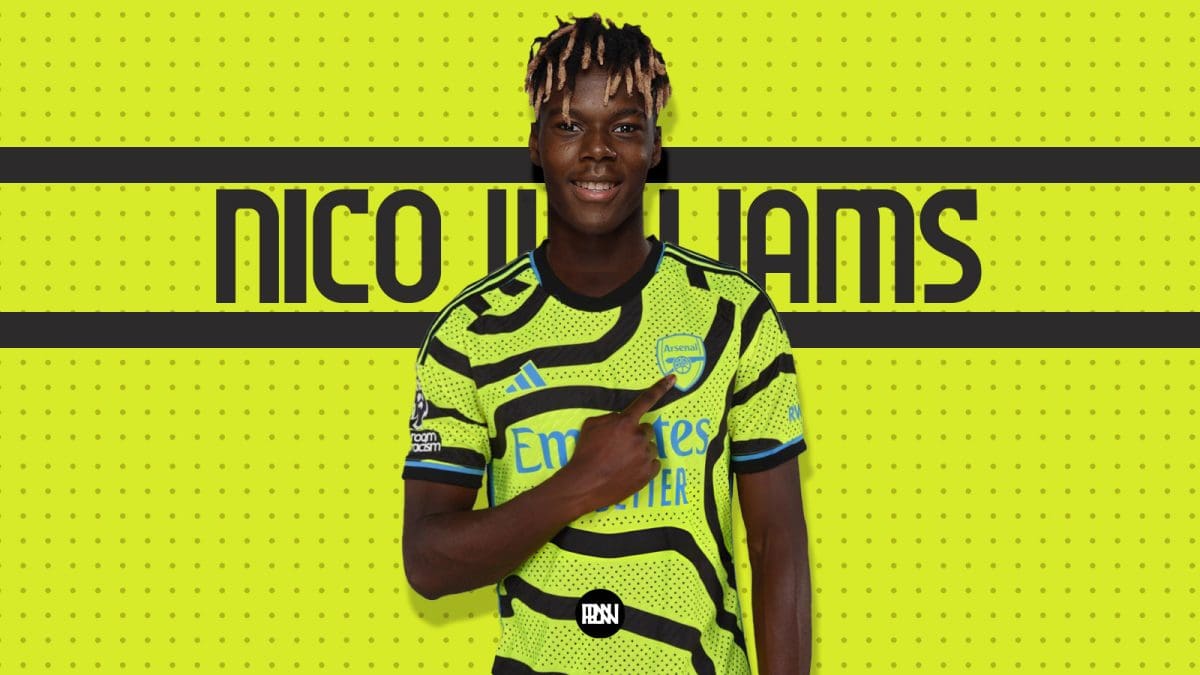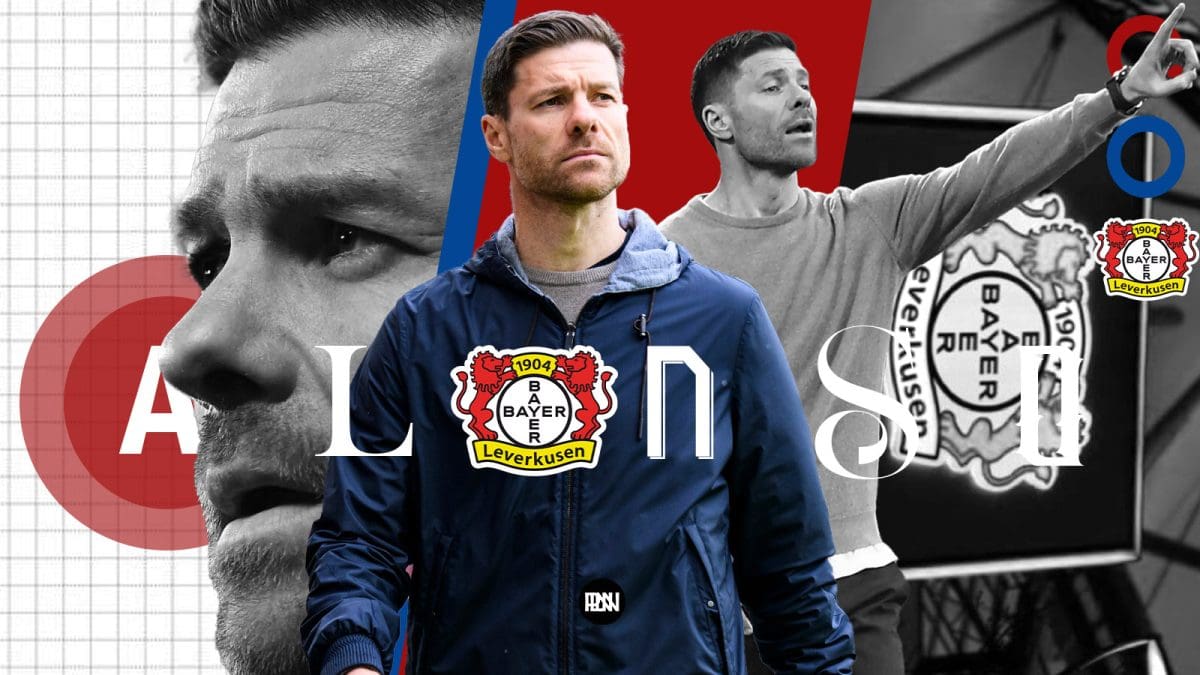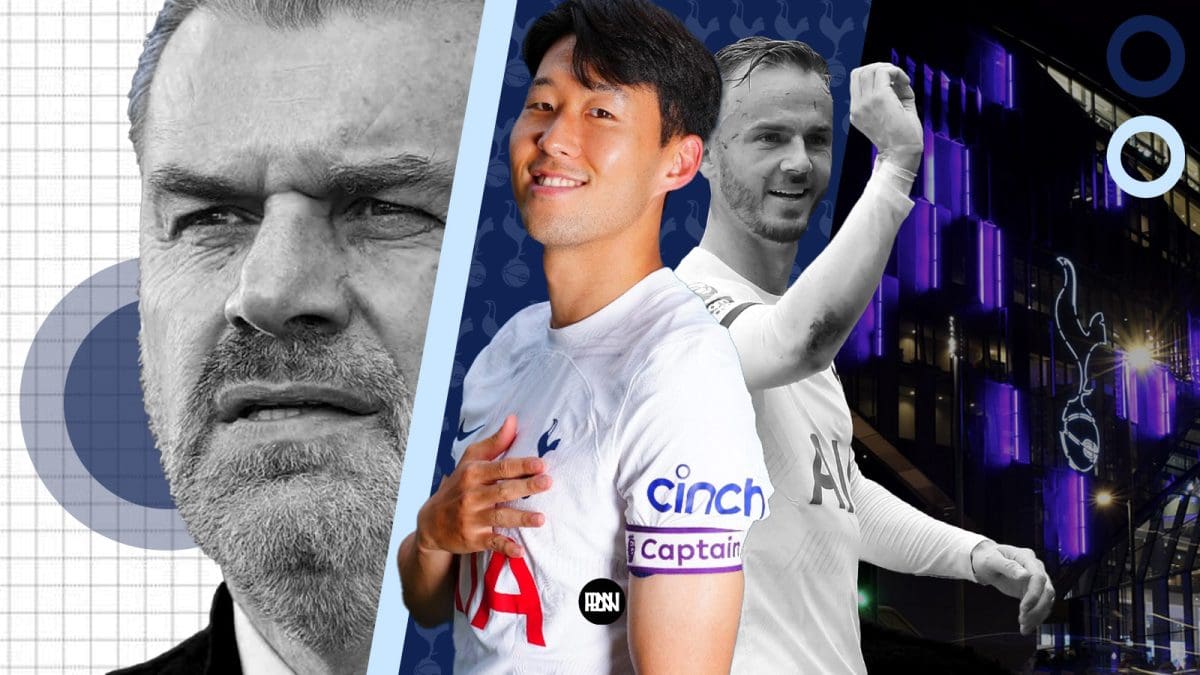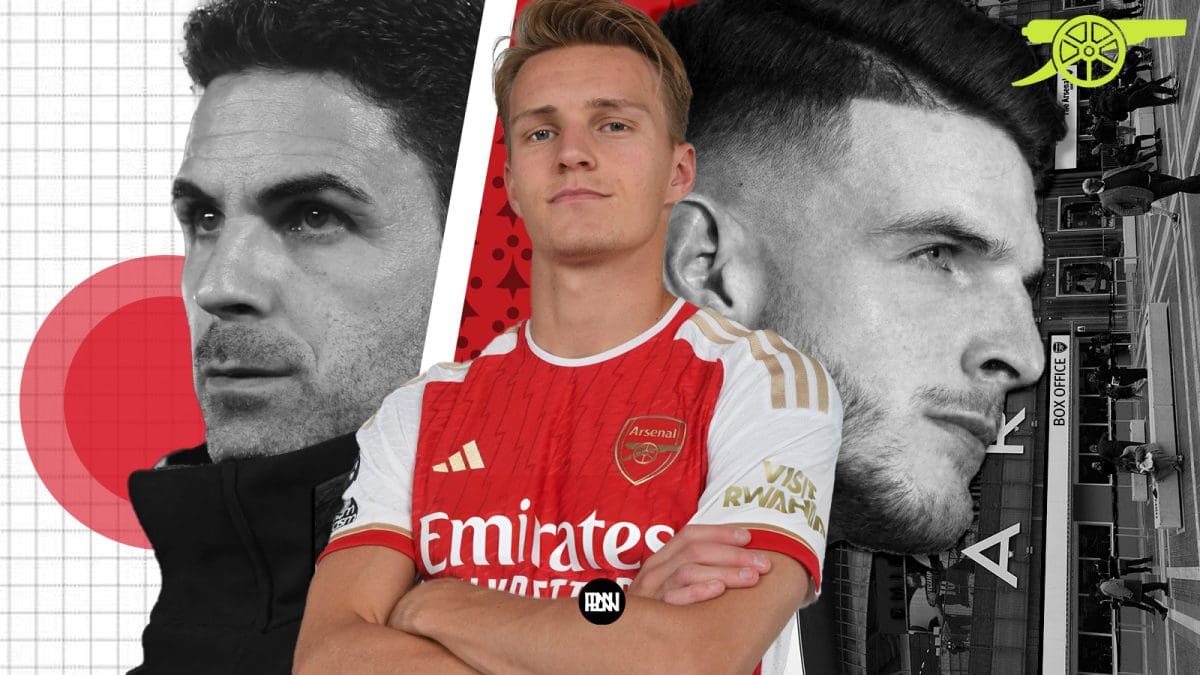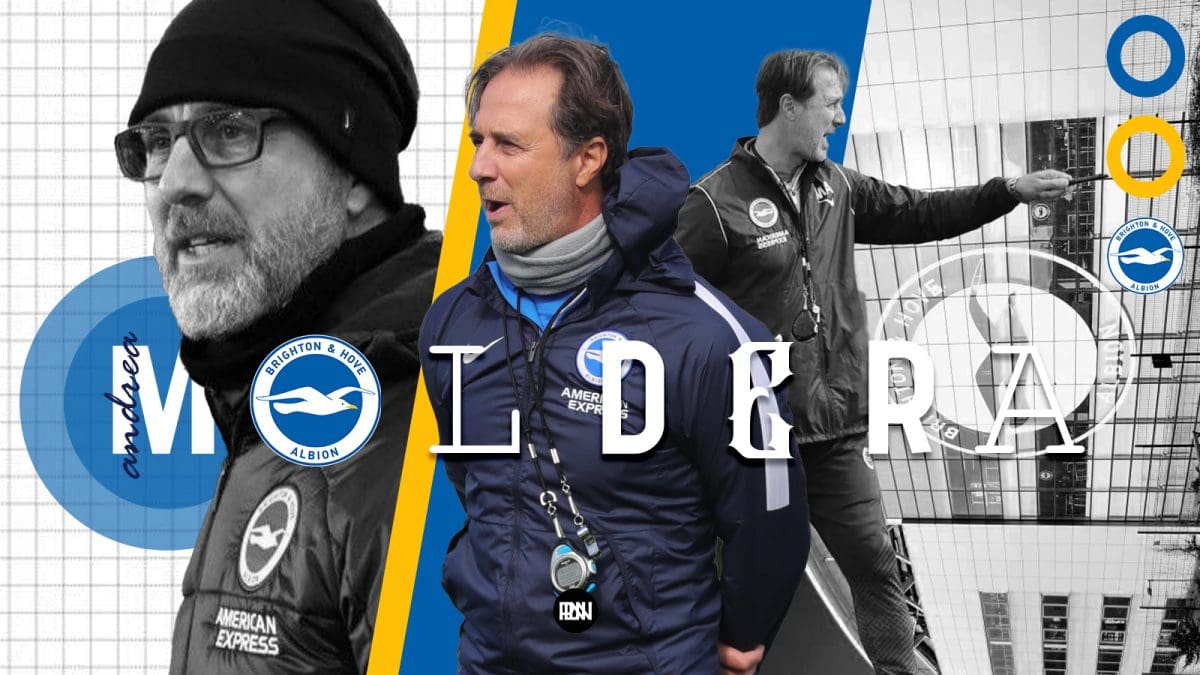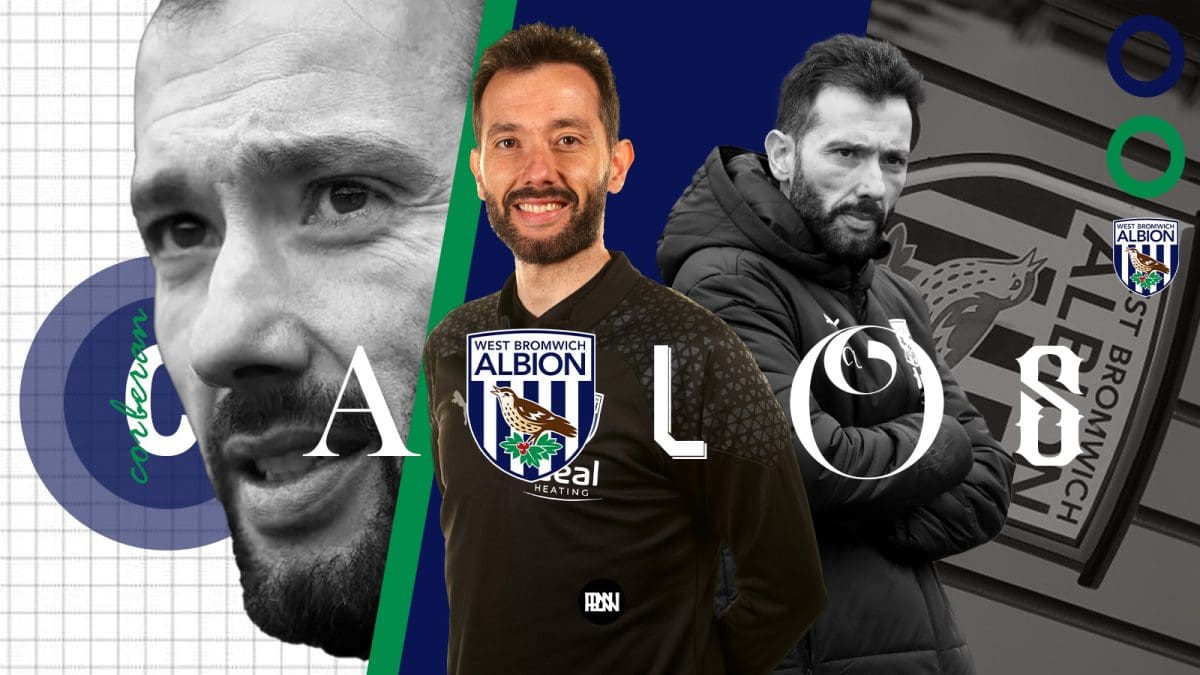Vincent Kompany, the former Manchester City captain and now the head coach of Burnley, has brought his unique tactical approach to the Premier League. Under his guidance, Burnley has become a dominant force, consistently ranking at the top in possession statistics. In this article, we will delve into Kompany’s philosophy and explore how Burnley utilizes possession and pressing to gain an advantage on the pitch. The analysis is based on Burnley’s campaign in the Championship last season.
The Importance of Space Management
One of the key aspects of Kompany’s tactical approach is the utilization of space and its impact on the overall game. He believes that managing space is crucial to success and has incorporated this principle into Burnley’s playstyle. By effectively controlling space, Burnley is able to dictate the game and create scoring opportunities.
440 – Burnley have had an average of 63.2% possession in the Championship this season, which is up 22.5% on their average across the previous six seasons. They’ve had 440 open play sequences with 10+ passes, more than in their previous three league seasons combined. Tiki-taka. pic.twitter.com/VyUA32IDYv
— OptaJoe (@OptaJoe) January 26, 2023
Kompany’s emphasis on space management is evident in Burnley’s high possession numbers. Last season, they have averaged a staggering 63.2% possession per game, the highest in the Championship. To put this into perspective, Norwich and Swansea, two possession-heavy sides, rank second and third with possession averages of 61.8% and 61.3% respectively.
The Art of Building from the Back
Burnley’s ability to maintain possession starts from the back. Kompany has instilled a mindset in his players that frames pressure as an opportunity rather than a problem. This mindset, coupled with their adeptness at beating the press, allows Burnley to confidently build out from their defensive third.
While some teams in the Championship may be reluctant to engage Burnley in their defensive third, Burnley still encounters situations where they build out from the back. These situations provide insight into the patterns and variations Burnley employs in possession, as well as the collective principles that underlie their play.
Kompany wants his team to generate numerical superiorities out of the defensive line as often as possible. When the opposition is reluctant to press, Burnley entices them by using a series of seemingly mundane horizontal and backward passes. This strategy sends a clear message to the opposition: “come, get the ball”.
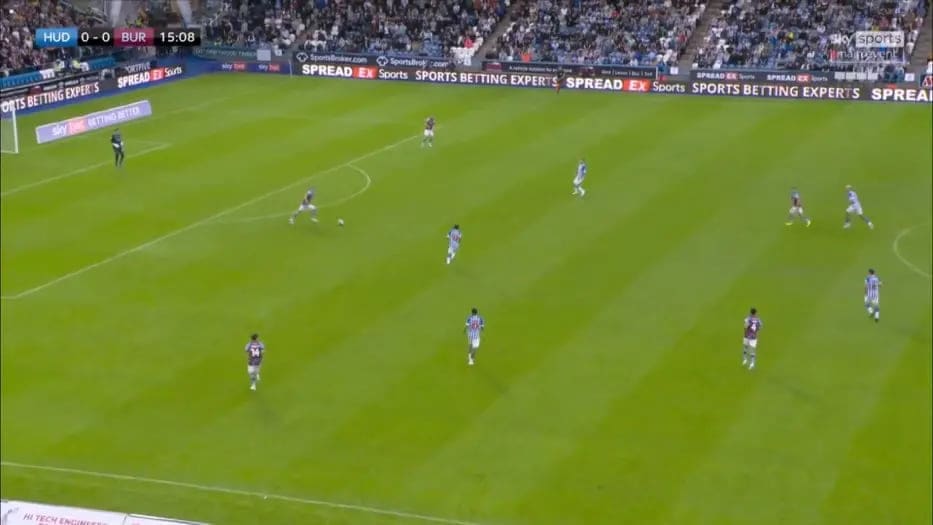
This concept of inviting pressure to then attack the spaces that emerge as a consequence is also applied on an individual level. Burnley’s then goalkeeper, Muric, and their defenders have embraced this provocative gesture, further emphasizing the team’s commitment to this approach.
Barring exceptional circumstances that favor an offensive transition, when Burnley regains possession in their own half, they reset their shape. Players move into their designated zones, re-creating the effects of a goal kick situation. This reformation of shape allows Burnley to build out with a structured approach, usually with a 4-2 formation.
Spatial Occupation and Overloading
Spatial occupation plays a crucial role in Burnley’s build-up phase. The positioning of players in specific areas of the pitch is a strategic decision that aims to create advantages and exploit spaces left by the opposition.
In Burnley’s 4-2 structure, the positioning of the front three, or in some cases, the front two with Brownhill dropping deeper, differs depending on the ball side. The far-side winger will move inside the far half-space, offering a direct route of progression, while the near-side winger, Rodriguez, and Brownhill will expand the playing area by pinning the opposition’s center-backs and left-back.

This lopsided spatial occupation of the last line can disorient the opposition’s shifting process, drawing their backline too much to the side where the ball is. Such disorientation creates opportunities for Burnley to execute switches of play to underloaded zones.
On the left, the arrangement is more symmetrical, with the far-side winger holding width. This asymmetry is a result of Burnley’s 4-2-3-1 structure and the characteristics of their players. Harwood-Bellis (RCB) and Muric (GK), who are right-sided players, naturally favor playing diagonally to the left-hand side of the pitch, where the far-side winger and left back are located in the half-space.
Adaptability and Variations
Kompany’s tactical approach is not rigid; instead, he emphasizes adaptability and tactical variations to exploit the weaknesses of the opposition. Burnley has demonstrated this flexibility by using different build-up shapes, such as the 4-1 and 3-3 formations, depending on the tactical components of their opponents.

In a game against Luton, Burnley employed a 3-3 shape, with Maatsen (LB) inverting to overload their midfield three. This created a midfield box, posing a conundrum for Luton’s defensive midfielder. With two Burnley players perambulating in his zone, the defensive midfielder had to choose who to mark, leaving the other player accessible for Burnley’s advancement.
In their customary 4-2 shape, Burnley utilizes various patterns of play to arrive at the middle third with positional superiority. These pre-planned moves are often funneled through the wide areas, taking advantage of the opposition’s tendency to prioritize the defense of the central space.
Some of Burnley’s patterns of play include finding the blindside run of the “10,” playing between the lines, and attacking depth. These moves aim to create opportunities for players to receive the ball in dangerous positions and exploit the spaces left by the opposition.
Mixing Up the Build-up
While Burnley predominantly builds up from the back with short passes, they also mix it up when necessary to avoid predictability. One common variation is having the far-side defensive midfielder gravitate towards the goalkeeper, creating a 4-4-2 shape. This movement not only takes the opposing defensive midfielder with them but also creates a gap for the winger to drop into and receive the ball, allowing Burnley to bypass the opposition’s press.
Additionally, Burnley employs long passes into the striker, with teammates in the help space overloading the second ball zones and offering support underneath. They also utilize long passes into the channel for the striker to run into, using loose balls as triggers for counter-pressing.
The Personnel-Driven Approach
Kompany’s tactical approach is not solely focused on his conception of the game; he also values individual quality. He believes in entrusting his players with more responsibility and freedom, allowing them to utilize their unique skills and abilities on the pitch.
This personnel-driven approach is evident in Burnley’s tactical setup. Kompany tweaks the structure to harness the abilities of his best players. For example, the asymmetry in spatial occupation is designed to maximize the passing abilities of Harwood-Bellis (RCB) and Muric (GK), who naturally favor playing diagonally to the left side of the pitch.
The Premier League

In their first game of the season, Burnley had a tough match against Pep Guardiola’s Manchester City. They lost 3-0, but the game showed some promising signs for Burnley at defending without the ball and putting pressure on their opponents. Despite their efforts, Manchester City was too strong to overcome. Pep Guardiola made some important changes during the game that completely changed how things were going.
23y 206d – Burnley’s starting XI has an average age of just 23 years and 206 days, the youngest line-up they’ve ever named in the Premier League and the youngest a manager – Vincent Kompany – has ever named in his first game in the competition. Bold. pic.twitter.com/kaUV0J7rhN
— OptaJoe (@OptaJoe) August 11, 2023
Even though Burnley lost, they have some young and promising players. These players looked strong when they attacked the opponent’s side of the field and managed to win the ball back quickly. The team has a lot of potential, but there’s a question about whether Kompany can keep using his possession-focused strategy and help the team avoid being relegated to a lower division. Watching how all of this unfolds will be really interesting.
Vincent Kompany – the Conclusion
Vincent Kompany’s tactical approach at Burnley has revolutionized their playstyle in the Championship. By mastering possession and pressing, Burnley has become a formidable force, consistently dominating their opponents. Kompany’s emphasis on space management, adaptability, and utilizing individual quality has allowed Burnley to create scoring opportunities and control the game. As they continue their journey in the Premier League, it will be fascinating to see how Kompany’s tactical philosophy evolves and impacts the team’s success.
MUST READ:
– Unai Emery’s Coaching Methodology and Philosophy
– Ange Postecoglou’s Tactical Vision & Philosophies
– The Bielsa Way: Architect of High-Intensity Football
– The Roberto De Zerbi Revolution
– The Art of Resilience: Sean Dyche’s Blueprint for Success


